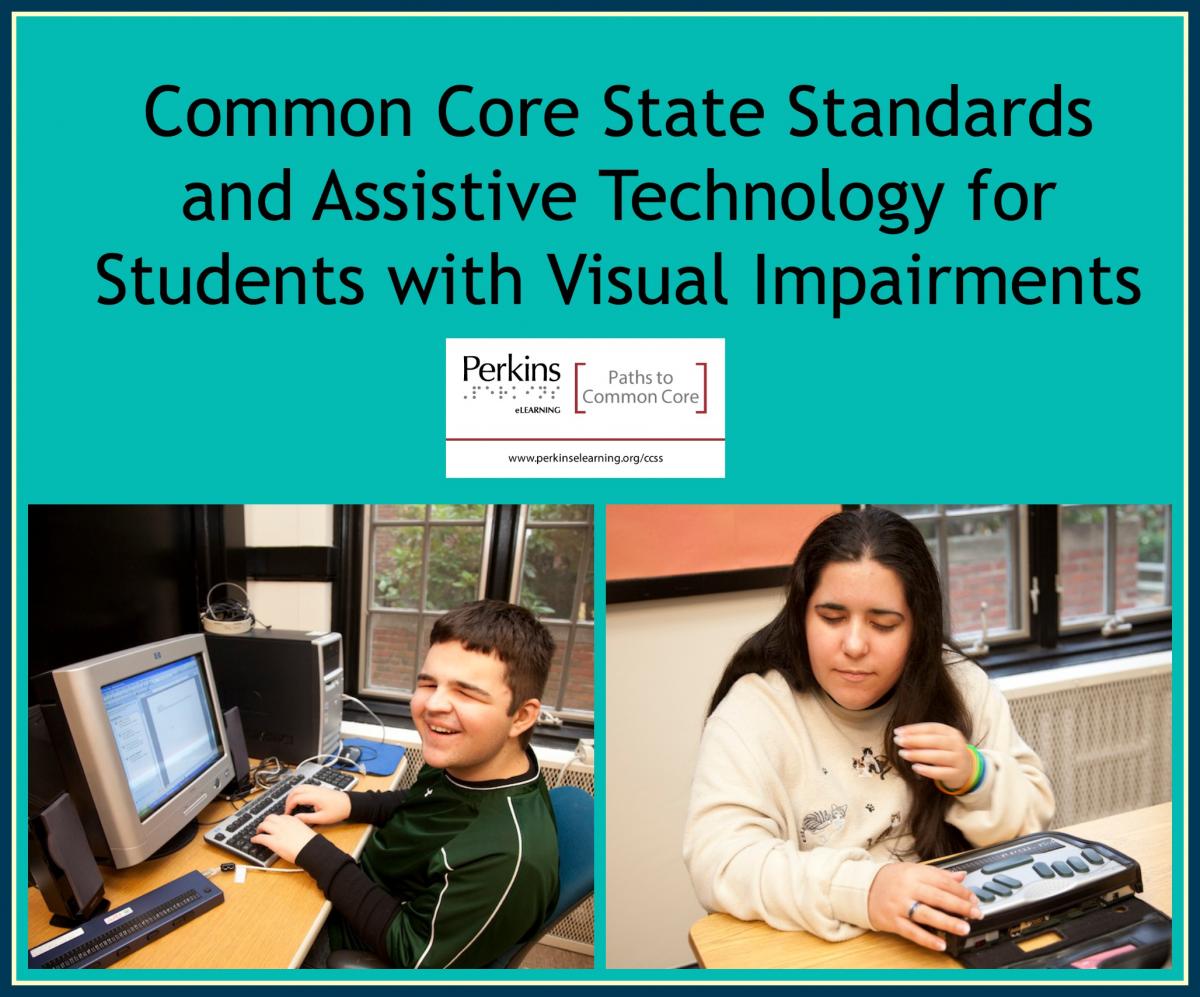Assistive Technology (AT), CCSS and AT Assessment
Submitted by Tara Mason on Sep 03, 2014
Ensuring that students have an accessible learning environment is directly linked to assistive technology. Many states that have adopted the CCSS will be required to implement CCSS assessments online using a digital delivery system. Additionally, many states are requiring school districts to implement 100% digital learning content in an effort to promote 21st century skills and prepare students for completing online testing.
Digital learning content and assessment will impact our students with visual impairments in multiple ways. Some questions we need to initially ask ourselves:
- Do our students have enough assistive technology (AT) skills to successfully complete an online test using new accommodating technology (e.g.screen reader and controls, new visualdescriptions of material) to correctly answer a test question?
- Do our students have assistive technology plans that are comprehensive and will include an emphasis on digital learning and testing content throughout the K-12 school day? Does our AT plan include a comprehensive AT evaluation?
- Do our student’s AT goals promote lifelong learning and are they linked to his or her post-secondary goals?
Where to begin…
As a TVI, you can begin to address these questions using the following worksheet:
TVI Worksheet for AT Considerations for IEPs
First of all, it is important that IEP teams understand what is mean by "assistive technology". IDEA defines assistive technology as any item, piece of equipment , or product system, whether acquired commercially off the shelf, modified, or customized, that is used to increase, maintain, or improve functional capabilities of children with disabilities” (P.L. 100-407, 29 U.S.C. 2201, §3(1))
Assistive technology (AT) is not used to teach a student skills in relation to the curriculum, rather AT provides a means for the student to access the curriculum, participate in classroom activities, and/or demonstrate her knowledge and skills. Assistive technology is individually matched to the student through a team process whereby the team identifies specific tasks, student's strengths, abilities, and areas of need, in order to identify accommodations, strategies and tools that lower barriers to the student's success in reaching her annual goals. (The SETT Framework -Student Environment Tasks, Tools).
IDEA requires that the IEP team review the students AT needs on an annual basis. The TVI can assist the team in this process using the questions outlined below.
Question protocol:
- What task is it that we want the student to do? (What are your learning goals for the student?)
a. What are the barriers that prevent the student from reaching these goals (at an expected level of his/her abilities)?
b. What has been tried and is it working?
- If "yes" (it is working), document and provide evidence. Skip to end.
If "no" -
- If it is not working, are there additional considerations or is there other technology available? (new or additional)
- Do we have the resources/collective knowledge to meet the needs or provide additional technologies. If yes, what will be tried? If no, what resources and/or knowledge can we access to meet this need?
- Document the recommended AT devices and services within the goals, objectives, and/or related services on the IEP. Consideration of AT should be ongoing and the process revisited as the student progresses and needs change.
We have answered the questions and determined the current AT is not meeting my student’s needs, what do I do now?
If you find, after going through the preliminary AT process with the questions presented on this website that the AT plan is not meeting your students needs then you can implement a more comprehensive AT assessment or evaluation. Stay tuned to our next AT and Evaluation Blog for resources to evaluate your student’s AT needs and identify appropriate accommodations for your student’s AT device(s).

